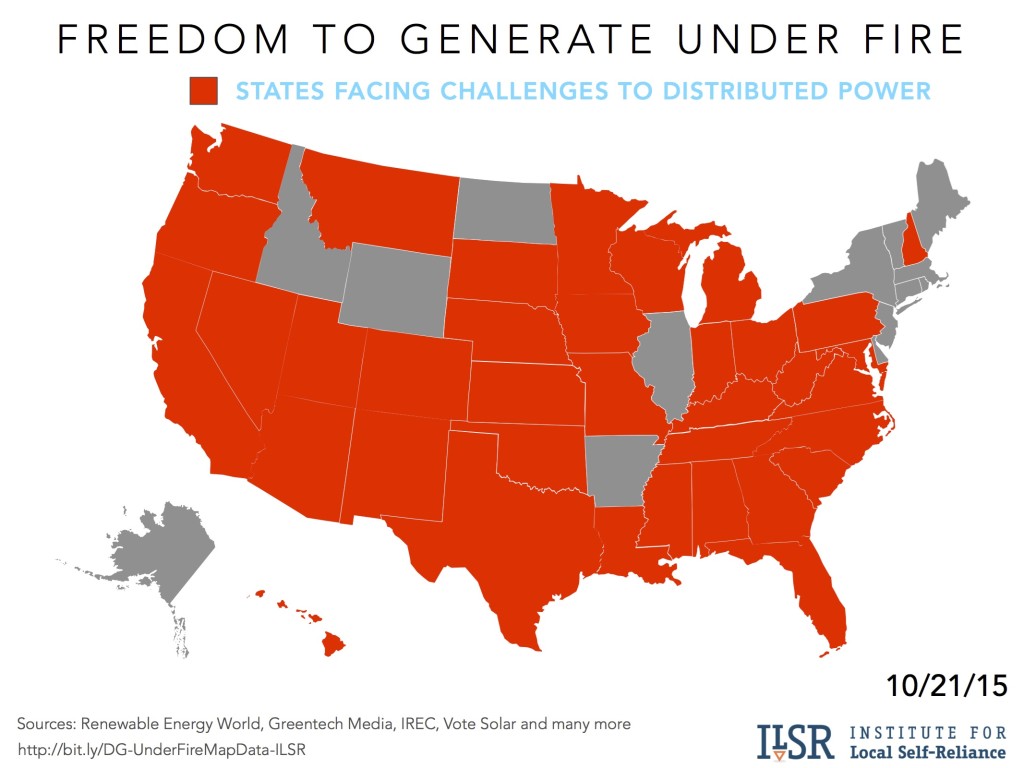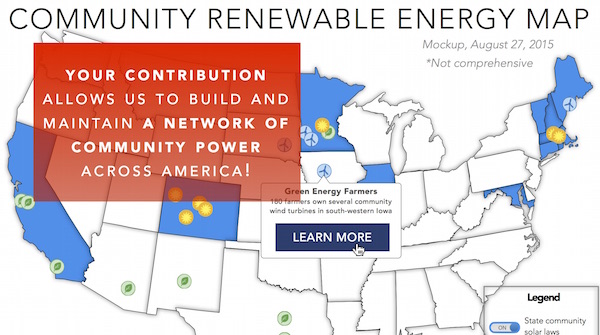Electric companies seemingly face a business “death spiral” because the 20th century rules for the electric grid make it a challenge to address stagnant energy demand and competition from energy-producing customers. The result is a utility-funded war on solar and other distributed power, and retrenchment on last century’s business model as many utilities try to gain certainty by taxing solar or requiring customers to pay more regardless of how much energy they use. But one investor-owned utility—Green Mountain Power—is bucking the trend and embracing a 21st century electricity system that’s driven from the ground-up by distributed renewable energy, storage, and smart grids.
A Different History
Green Mountain Power has distinguished itself from its peers for nearly a decade. In 2008, this utility serving 75% of Vermont’s electric customers testified to the state’s Public Service Board that it wanted to expand net metering by increasing project sizes, the capacity cap on projects, and pay a premium of 6 cents per kilowatt-hour—in addition to the retail energy rate—to solar producers because of the value of offsetting dirty, peak energy production.
In 2011, the utility completed its campaign to install 10,000 solar panels in 1,000 days, beating its goal by installing 26,000 panels.
In 2013, the utility was the first in the nation to rent cold-climate heat pumps to assist with residential heating and cooling.
In 2014, unlike many of its utility peers, Green Mountain Power supported quadrupling the capacity cap on net metering from 4% to 15%. The law also allowed projects under 15 kilowatt to be registered within 10 business days. The utility followed up on its support for expanding solar by breaking ground on a microgrid for Rutland, VT, combining 2.5 megawatts of solar with 4 megawatts of battery storage. The project provides resilient power in the event of a larger grid outage, and contributes to the utility’s goal of making Rutland the “solar capital of New England.”
Also in 2014, the utility announced a partnership with NRG to “remake the Vermont grid” by offering “community solar, energy management systems, micropower, personal power, electric vehicle charging and similar distributed energy offerings.” More broadly, the partnership is intended to “transform the distribution grid ‘to a market-based platform designed to create efficiencies and distributed energy solutions.'”
In 2015, the utility launched a program for customers to “share solar,” allowing customers with sunny roofs to host solar arrays at no cost. The customer would receive a portion of the energy, reducing their energy costs, and the remaining production would be available for purchase by other electric customers.
A Different Orientation
While Vermont’s largest utility has sided with its customers, other utilities continue to battle against them, in fights covering more than two-thirds of U.S. states (Vermont is notably absent from the list).
The difference?
Green Mountain Power is the only electric utility in America organized as a Benefit (or “B”) Corporation. B Corps are for-profit companies, but include “positive impact on society and the environment in addition to profit” as their legally defined goals. It’s like the “fair trade” label for coffee or the LEED standard for buildings, a way to differentiate between companies whose only goal is profit maximization and those that want the legal flexibility to think more broadly.
The utility has a vision for using the energy system to the greater benefit of all its customers:
GMP is at the forefront of a new energy system for Vermont that can improve lives, reduce costs, and be produced in a more environmentally and economically sustainable way. They are leading the transition from the traditional grid of the past, to one that is more resilient and reliable, and that uses a series of microgrids through renewable and clean energy generation and innovative energy storage solutions. This work will empower their customers like never before and increase their comfort in all Vermont seasons while fostering healthier, stronger communities.
Why Not All Monopoly Utilities?
The fundamental rule of the 20th electric utility system is granting government-sanctioned monopolies to most for-profit utility companies, to avoid costly duplication of electrical infrastructure and capture economies of scale for power generation. But the grid is built, and the scale economies for fossil fuels are undermined by the socialized health and environmental costs as well as competition from cost-effective distributed renewable power. The utility’s monopoly is increasingly un-natural.
One solution is to follow New York into the brave new world of regulated de-monopoly, changing the distribution system from just one piece of a utility behemoth into an open, competitive platform for delivering energy services. It’s removing the conflict of interest for utilities that own power plants that compete with customer-driven solar, energy storage, and energy management.
But an alternative to cracking open archaic monopolies would be to incorporate the public benefit into their corporate charter.* Instead of requiring utility commissioners and legislators to endlessly battle well-funded utility companies over incremental shifts toward a cleaner and more equitable energy system, bake it into their legal structure. Make every utility monopoly company a B corporation.
Most utility companies aren’t prepared to embrace the transformative opportunity to democratize the electricity system, whether due to inertia, conservative culture, or perceived conflicts with their profit-maximizing mission. They can’t envision a system in which the customer is king, and not the utility. And the tools we have to move utilities require enormous time, energy, and money to overcome the power of their economic and political incumbency.
Maybe it’s time for Plan B.
—
This article originally posted at ilsr.org. For timely updates, follow John Farrell on Twitter or get the Democratic Energy weekly update.
Photo credit: Martin Ringlein via Flickr (CC BY-NC-ND 2.0 license)
*Note: this wouldn’t change anything for government-owned municipal utilities or rural electric cooperatives, that operate under the auspice of democratic control.





